








































As we reflect on 2022, we celebrate strides to improve quality of life for families and build stronger communities on the Central Coast. The launch of the Family-Friendly Workplaces Program has bolstered local businesses’ efforts to support employee-parents, address work-life balance issues, strengthen productivity, and get more parents back to work. While not a one-size-fits-all approach, here are some powerful examples of positive practices in action:
• Morris & Garritano offering employees the option to work remotely or in hybrid locations and to modify their hours to accommodate individual needs.

• RRM Design Group implementing Dependent Care Flexible Spending Accounts as well as extra assistance for unexpected child care costs.
• Tolosa Winery rolling out a 4/10 schedule that encourages life balance and champions sustainable strategies.
• The Land Conservancy integrating with California’s paid family leave and medical leave programs to grant employees up to 14 weeks of full-time pay for a qualifying event or situation.

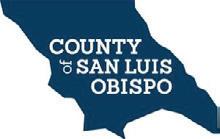
• Trust Automation maintaining an on-site early learning and care center to help working parents avoid breakdowns in care, reduce commute times and allow them to feel less stressed on the job and in life.
• Lumina Alliance breaking from traditional norms and office-space expectations to welcome babies, young children, and even family pets in the workplace.
• The Central Coast Breastfeeding Coalition assisting employers in creating and implementing lactation accommodation policies based on and building upon California law.

• iFixit providing a $1,000 bonus to employees who have a new baby, 100% salary continuation while parents are on pregnancy leave and paid family leave, Dependent Care Flexible Spending Accounts, plus
a $1,250 stipend per year for childcare expenses.
• Carmel & Naccasha LLP bestowing on its team members the coveted gift of time with a summer-long ’40-for-36’ plan where employees get paid for their regular schedule while working a 36-hour work week.
• The Pad Climbing taking family-friendly practices to new heights with unlimited paid leave, lactation accommodations, infants-at-work, work location/time flexibility, telecommuting options, and extras like a workplace wellness program and financial planning help.
At the forefront of these encouraging shifts is Workforce Development Manager Christina LeFevre Latner, who leads the campaign to educate employers on the benefits of family-friendly policies— sharing the beneficial economic impacts and longterm outcomes for children, too. LeFevre Latner and her team have hosted peer-to-peer workshops where employers could exchange ideas and share experiences implementing practices and have launched an assessment tool that allows businesses to gauge how family-friendly they are, while giving employers insight into other available options to enhance practices. The tool became a base for the SLO County FFWPs Award Program and serves as a recruiting mechanism for FFWPs in hiring. In 2023, we hope to see strengthened partnerships with Chambers of Commerce across the county; the facilitation of more workshops; a growing list of businesses seeking assessments, consultation and assistance; the development of industry-specific recommendations for hospitality and/or agriculture; and the start of collaborations on building child care options. The future looks brighter when we work together to create the best possible environment for people to live, raise families, and pursue their passions in a place they love. Thanks to the County of San Luis Obispo – First 5’s shared investor in the FFWPs Program; to the SLO Chamber for hosting this vital countywide program; and to the multiple community, business and government leaders who are committed to achieving a shared vision for all.
To learn more about the Family-Friendly Workplace Toolkit, visit slofamilyfriendlywork.org. For information on the Family-Friendly Workplaces Program, contact the SLO Chamber’s Workforce Development Manager, Christina Lefevre Latner, at (805) 786-2762 or christina@slochamber.org. To learn more about early-childhood related initiatives, go to first5slo.org.
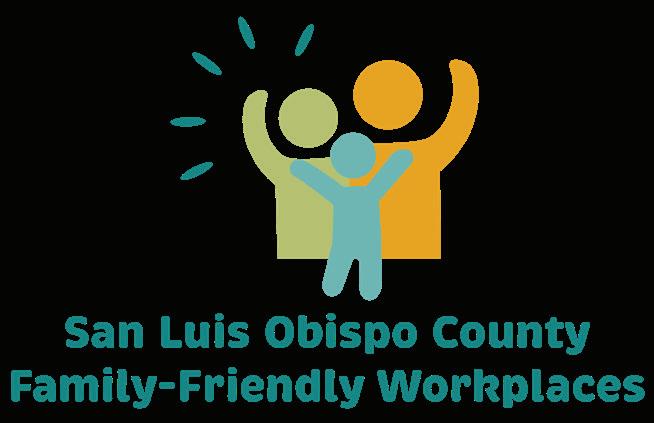 The Family-Friendly Workplaces Program is a partnership among First 5 San Luis Obispo County, the San Luis Obispo Chamber of Commerce and the County of San Luis Obispo. This FREE initiative, housed within the Chamber, aims to help businesses hire and retain employees, support working parents’ balance between job and home life, and bolster the economic vitality of our communities. The program builds on the SLO County Family-Friendly Workplace Toolkit which was created by the “We Are the Care” Initiative – a countywide coalition dedicated to addressing local child care and related work-life balance challenges faced by local families.
The Family-Friendly Workplaces Program is a partnership among First 5 San Luis Obispo County, the San Luis Obispo Chamber of Commerce and the County of San Luis Obispo. This FREE initiative, housed within the Chamber, aims to help businesses hire and retain employees, support working parents’ balance between job and home life, and bolster the economic vitality of our communities. The program builds on the SLO County Family-Friendly Workplace Toolkit which was created by the “We Are the Care” Initiative – a countywide coalition dedicated to addressing local child care and related work-life balance challenges faced by local families.
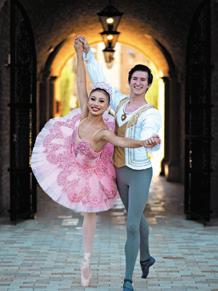










The holidays are here and we are beyond excited to welcome back all of our old-time favorite events that have been dormant for the last two years. Living in a close community like ours, we love and cherish our community events. Getting out and seeing one another, catching up with old friends and colleagues, taking the time to be present and slow down long enough to make memories while enjoying the coldest time of the year.
As an annual tradition, our family cuts down a tree the day after Thanksgiving and hangs our lights on the house before the Thanksgiving weekend is over, all while “Jingle Bell Rock” and “Rudolph the Red-Nosed Reindeer” play on repeat. These are the days I will forever cherish. Our boys are now 10 and 8 and absolutely love the holidays as most kids do; however, we have started several holiday traditions to focus on the memories, family, and the time we all have together. We take time and recognize Winter Solstice and celebrate the changing of the seasons. Nic and the boys make Gingerbread Houses from scratch with the ingredients collected from our Elf on the Shelf no. 0599 (the name the boys gave him) brought with him to share with us from the North Pole.
Traditions such as these are the fabric of our family and have been created with the intention of being able to pass on for generations to come. As a child, I did not have many traditions to carry on, so it was essential to both Nic and me to create that for our kids.
Living in a community such as ours allows us to do that as well; attending the tree lighting and parades, walking around the lake, and driving around to see all the twinkling lights are a part of our tradition as well. We are grateful for a community who believes in keeping the magic alive by pulling us all in close so that even if we have a small or large family, we are all welcome.
We are grateful to all of you for keeping the spirit alive and reading our publications each month. We love our community and wish you all a very happy holiday season, no matter what you celebrate during this time of the year.
We hope you enjoy this month’s issue of the Central Coast Journal, your magazine of the Central Coast.
Happiest of Holidays and much love, Hayley, Nic and family

if thou wouldest win immortality of name, either do things worth the writing, or write things worth the reading.
— Thomas Fuller, 1727
This month’s edition of Central Coast Journal is brought to you by all the local advertisers that fill our pages. Thanks to them, we are able to bring you, your Magazine of the Central Coast.

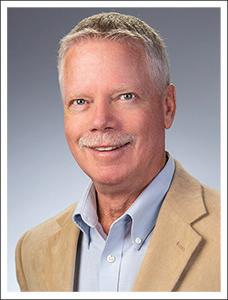



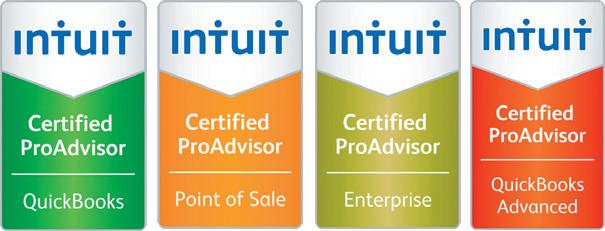



communities to which they re turn, increase efficiency of health services delivery, and strengthen organizational effectiveness.
It was a daunting and arduous task. Everything we did in the Jail that was health related was put under the microscope. The COVID pandemic created its own set of unique challenges to the process. It definitely slowed the process down, but it did not diminish our determination to achieve accreditation. it was only through a coordinated effort by custody staff and Wellpath that made accreditation possible.
The Sheriff’s Office re ceived an early present this holiday season. But it wasn’t just gifted to us. We earned it. And we sure are proud of it. In short, the County Jail recently re ceived national recognition for its health care services. Now here’s the longer version. The Nation al Commission on Correctional Health Care has awarded na tional accreditation to the Jail for demonstrating compliance with NCCHC’s nationally recognized standards of care for correctional health services in jails.
Basically, this accreditation rec ognizes the Jail’s commitment to providing quality health services for the inmate population. To get to this point was not easy. Several
years ago, we recognized that our health services needed to improve in the Jail. That’s when I hired a Chief Medical Officer to oversee all health care in the Jail, created a behavioral health unit to help those inmates with mental health issues, instituted inmate programs that have gone on to be nation ally recognized, and outsourced all of our health care to Well path, a well-respected company that specializes in health care in correctional facilities. Our goal at the time was to achieve national accreditation. To be recognized for the high standards we’ve met for delivering health care to the inmate population.
This process was not easy. To receive accreditation from NC
CHC, the Jail underwent a rig orous professional assessment. During the assessment, a team of experienced physicians and ex perts in correctional health care surveyed the facility for compli ance with jail-specific standards in several areas such as patient care and treatment, health pro motion, safety and disease pre vention, governance and admin istration, personnel and training, special needs and services, and medical-legal issues.
Why the NCCHC? Well, for 40 years, NCCHC’s highly re spected standards have provided guidance to help correctional health professionals and admin istrators improve the health of their jail populations and the
What many don’t realize is we have a constitutional obligation to provide health care to those in our Jail. And I think we are com mitted to providing that health care with innovation, excel lence, and efficiency. That’s why I salute our health care provider Wellpath, our custody staff, and leadership for their hard work and dedication on behalf of our patients.
Correctional Captain Stepha nie Landgraf oversees the entire Jail facility and is part of a new generation in the ways we think about a correctional facility and how it should operate. She was instrumental in making sure we received this national honor of accreditation. I think she said it best, “This is a great example of the county and the Sheriff’s Of fice commitment to a safe and healthy County Jail that meets the changing and sometimes challenging demands of health care across the country.”
Labor, water and sunshine. Take away any of those three resources, and Cal ifornia agriculture dies.
If the prospect of a declining agriculture industry in our state doesn’t scare the heck out of you, let’s take a peek in your pantry to see how much of that food is grown by California farmers.
Of all the different types of fruits and nuts grown in the United States, over 75 percent are only grown in California, and by total volume, California produces over half. More than a third of U.S. vegetables are only grown in California. Without California farmers, we would have to import or go without al monds, artichokes, celery, figs, garlic, raisins, kiwifruit, honeydew melons, nectarines, ol ives, clingstone peaches, pistachios, plums, sweet (sticky) rice, and walnuts.
Farmers and ranchers in the Golden State produce more than 400 commodities. The vast majority — like 75 to 90 percent — of U.S. broccoli, carrots, cauliflower, lettuce, tomatoes, apricots, avocados, strawberries, raspberries, lemons, tangerines, and mandarin oranges are grown in California.

Living in such a bountiful local agriculture community, it’s easy to take our food system for granted. In San Luis Obispo County, I worry we suffer at times from an insular per spective about food production. Certainly, SLO County grows enough food to feed our local population many times over, and per haps nowhere else in the country has such an abundance of fresh, safe, affordable food available year-round as the Central Coast.
Having no local food is a foreign concept to us in SLO County. With a vibrant net work of farms, farmers markets and local farm stands across the county, consumers cannot help but perceive “all is well” in agriculture.
What happens in California agriculture re verberates across America, and I can tell you that the “secret sauce” that makes California our nation’s top food producer is at risk.
The sun is still shining, sure, but our water and labor resources are in bad shape. We are in a new era where drought will be the norm. If we want agriculture to be a part of Califor nia’s future, we’re going to have to change the way we do things. That goes for the way we produce food on the farm, but it also means changing our public policy decisions.
As the largest user of developed water, agriculture will have to be part of the solu tion. I can tell you though, improvements in irrigation efficiency and growing less wa ter-intensive crops aren’t going to be enough. Investing in new water infrastructure must be a major part, but dams and canals won’t be the cure if there’s no rainfall. I am thankful that
in the last year or so, our local government leaders are talking more about an “all of the above” approach to water, but at the state level especially, we have created a regulatory system that makes any type of new project nearly impossible.
California farms are more dependent on agricultural workers than any other state. Without these essential farmworkers we can not produce fruit and vegetables for the coun try. Year after year, our SLO County Farm Bureau and California Farm Bureau lobbies for comprehensive immigration reform like the Farm Workforce Modernization Act, and it might surprise you that we often face op position from Farm Bureaus in other states. There is no simple solution to our complex immigration problems, but I get frustrated with my farmer friends in other states who just don’t seem to get it. With large machin ery for planting and harvesting, their farms don’t rely on a large workforce to raise grain crops like corn, wheat and soybeans.
SLO County farmers are increasingly de pendent on the federal H-2A guestworker visa program because local labor is in short supply. Couple that with our workforce hous ing shortage, the ever-growing list of labor regulations and overtime rules coming out of Sacramento, and we’ve got the perfect storm for an existential threat to California’s worldclass $50 billion agricultural economy.
With less than 2 percent of our popula tion working in agriculture today, our future depends on you. As you gather around the dinner table with your family this holiday season, remember the California farm and ranch families who made it possible.
Brent Burchett serves as the Executive Direc tor of San Luis Obispo County Farm Bureau. He can be reached atbburchett@slofarmbureau. org or (805) 543-3654.

Coats for Kids has been helping keep families warm for 35 years, and after two years of modified giving, they will be joining the Toy Bank of Greater Paso Robles for the “Day of Giving” on December 10.
The mission of Coats for Kids has always been to distribute warm items such as coats, jackets, sweaters, and sweatshirts directly to North County families, not just kids, in need.
Thirty-five years ago, in 1987, Coats for Kids began when Barbie Butz was president of the Los Niños Auxiliary of the Children’s Home Society. Members of the society were looking to begin a hands-on project to help the community. So they thought, “it’s cold out; how about coats?”
During their first year of distribution, Barbie and her fellow mem bers handed out flyers outside of another toy bank, in the pouring rain, and offered people to come down and get a warm coat. That year they distributed around 40 coats.
After a few years, the Los Niños group decided not to con tinue the coat drive. But Barbie and her husband John decided they couldn’t let that be the end of the coats. Together, they continued the operation and now have distributed over 3,000 coats.
“The reason I do it, is that I can’t not do it. And my husband is the same way,” said Barbie. “I don’t think anyone should be cold.”
The operation continued to grow each year, from their early days of using an enclosed trailer to the Armory in Atascadero and now to the Paso Robles Event Center.
Every year, volunteers gather, sort, and distribute new and gently used coats of all sizes, giving warmth to families in need across the Central Coast at absolutely no cost to them. In addition, the vol unteers work with multiple local businesses and charities to serve over 750 families.
But, operations were slowed down the last two years due to COVID-19 restrictions. Dedicated to sharing the warmth in hard times, Barbie and her team of volunteers put together a drive-thru for the coats.
This year, the Coats for Kids operation will return with one full distribution day with the Toy Bank of Greater Paso Robles for the “Day of Giving” on December 10. Gently used and clean coats, sweatshirts, jackets, and sweaters are needed for all ages.

The Rotary Club of Paso Robles has joined the Coats for Kids 2022 team and distributed collection boxes in November to some of the businesses in the Paso Robles area. They will have boxes in other North County communities to make it convenient for those who want to donate a new or gently used item.
Two North County dry cleaners, Plaza Cleaners in Atascadero and Paso Robles and Fashion Cleaners in Atascadero, are also dropoff locations for items needing cleaning or refreshing. They clean them free of charge. Just drop them off, say “Coats for Kids,” and a committee member will pick them up.
Barbie can recall many stories with Coats for Kids that have stuck with her throughout the years — specifically one that involves a very adorable pink coat.
“Most volunteers experience something that brings them back,” Barbie shares as she reminisces on all the warmth they have shared with the community.
Drop-off locations and more information on Coats for Kids can be found at coatsforkidsslocounty.org.

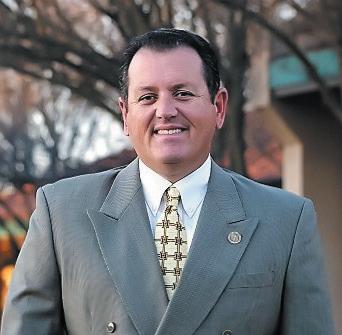 BY JAMES BRESCIA, ED.D. COUNTY SUPERINTENDENTOF SCHOOLS
BY JAMES BRESCIA, ED.D. COUNTY SUPERINTENDENTOF SCHOOLS
Career Technical Education (CTE) in each San Luis Obispo County school district provides students with the training, academic skills, and technical knowledge necessary to suc ceed in future careers. San Luis Obispo County schools not only promote “Future Careers, Locally Grown,” they support lifelong learning. CTE is the practice of teaching specific career skills to students in middle school, high school, and post-secondary institutions. Across the United States, nearly 12.5 million high school and college students enroll annually in CTE courses. CTE prepares these learners for the world of work by providing academic content, introducing workplace competencies, and exposing stu dents to a hands-on context. The current high school graduation rate for CTE concentrators is approximately 90 percent, nearly 15 percentage points higher than the national average. CTE covers multiple career clusters and is an investment of tax dollars in our schools, yielding positive results.
The San Luis Obispo County Office of Education (SLOCOE) established SLO Partners and the SLO CTE Foundation in 2014 to address college and career readiness among the county’s stu dent population. SLO Partners’ mission is to engage business partners and educators. Engagement is accomplished by aligning workforce needs with career and college pathways and providing work experience opportunities to ensure our residents have the skills and knowledge necessary for success in the workplace. Local businesses report that skilled workers represent a sound, thriving, and sustainable economy benefiting everyone. In the eight years since SLO Partners founding, our commitment to collaborating with local businesses and education has continued to grow and serve the local community. Promoted programs provide residents practical training opportunities to grow and address today’s work place needs.
Strong local businesses and a skilled workforce thrive when we work together. Collaborative efforts strengthen economies, families, schools, and communities. These modern boot camp training programs specifically designed to fill the talent needs of local businesses are one of the objectives of the SLO Partners program. The partnerships between K-12, Cuesta College, SLO Partners, and local business leaders are helping to bridge the gap between opportunities and reality for individuals in San Luis Obispo County.
I have previously highlighted programs in tech, digital media, and the trades. This month I am featuring our dual enrollment, pre-apprenticeship, apprenticeships, and employment success in Early Childhood Education (ECE). The Ticket 2 Teach program is an earn-and-learn apprenticeship program designed to support current and future educators by providing work-based learning
opportunities at the high school, private, and public agency levels. These workbased learning op portunities pair with meaningful support and resources such as educational opportu nities, skill develop ment, and mentoring. We need Early Childhood Educators in San Luis Obispo county and the surrounding rural communities.
The San Luis Obispo County Childcare Planning Council (LPC) is working with multiple agencies in our county to address the issue. The LPC is an advisory body to the County Superinten dent of Schools and the Board of Supervisors. The LPC plans for and promotes high-quality and accessible services for the care of all children and youth. Current opportunities include the Child Care Business Grant and Ticket 2 Teach programs. Upcoming grants available to the community include the Agency Expansion Grant, education scholarships, and mentor support. Program expansion is in partnership with families and the community through the LPC. Additional information is available on the San Luis Obispo County Child Care Planning Council website.
Early Childhood Education degrees and certifications are pro vided by Cuesta College, including dual enrollment classes for high school students. Students completing dual enrollment courses receive high school and college credits toward degrees and certi fications. Students completing the Early Childhood Education dual enrollment courses, majors in Child Development and Family Studies, and other related programs prepare for careers working with children and their families. CTE dual enrolment courses allow high school students to engage in Cuesta College courses at their high school during their high school day and explore future careers.
San Luis Obispo County ECE pathway programs prepare stu dents to work with children from infancy into middle childhood in various settings. Fiscal support for these CTE programs originated through local efforts of the school districts, the San Luis Obispo County Office of Education, Cuesta College, the San Luis Obispo County Board of Supervisors, and legislators such as Senator John Laird and Assembly Member Jordan Cunningham. It is an honor to serve as your County Superintendent of Schools.
“The price of success is hard work, dedication to the job at hand, and the determination that whether we win or lose, we have applied the best of ourselves to the task at hand.” — Vince Lombardi
It’s December on the Central Coast, so that means It’s time for “Hand crafted for the Holidays” at Studios on the Park in Paso Robles. Studios on the Park is a nonprofit art center nor mally known for its bi-monthly art exhibi tions showcasing diverse and high-quality works from local and out of the area artists. Studios is also lucky to have working art studios featuring 15 local artists who create and exhibit their work in their spaces. Its main mission is art education and under the nonprofit, Kids Art Smart serves over 2,000 kids who learn about and make art each semester. When winter comes around, Studios really shines.


“Handcrafted for the Holidays,” or simply “Handcrafted” for the locals, has become an annual tradition here. It features many different handmade arts and crafts from lo cal and visiting craftsmen and women. This
year we will have a record number of artists participating, over 30 wonderful artists. We are excited to welcome back some of our favorite artists’ return, as well as welcome in many new people to show off their work.
Pieces range in medium and price, and we will have something for every style, taste, and budget. We will have blown and fused glass pieces. We will have beautiful textiles, including handmade scarves from our silk artists and weavers. We will have gorgeous wood pieces from our carvers and wood turners, as well as some of our favorite ce ramic and jewelry artists. It’s always a treat to see what the artists create.
As with all our exhibitions at Studios, a portion of our sales goes to the nonprofit and helps us provide free art classes for the county’s elementary school kids and other programs here. That is why we say, “Every
one Loves Studios.” We are reaching our 15th year and are reaching the second gen eration of guests, and we want to continue that legacy for many more. When you buy a gift at Studios, you are given three gifts. You are buying something unique for a loved one, but you are also supporting local artists and you are helping provide arts education to our local youth and community and other programs.
We and our artists hope to see you at Stu dios on the Park this December to celebrate the holidays and show how much you love Studios. If you don’t need anything this year but still want to help, you can always donate or volunteer. We appreciate your support. Happy Holidays from all of us at Studios, and a Happy New Year.
For more information on Studios on the Park, visit studiosonthepark.org.
Another New Year is almost upon us, and if you’re like most of us you’ll wonder where the year went. An ticipating the New Year and turning the page can be tempting, especially if the previous year has been less than stellar. But before you start thinking about a fresh start or writing New Year’s Resolutions, it’s important to reflect on the year past, celebrating accomplishments you achieved, or perhaps how you improved yourself or the lives of those around you. Looking back helps us solidify how we grew or evolved, perhaps personally or professionally, looking at areas we may want to improve, and may be just the jumpstart needed to plan for a successful year ahead. It can also be a great boost for our morale. After all, hindsight is 20/20.
Many organizations conduct a year-end review to determine if they accomplished their company’s goals. But a personal end-ofthe-year review can also be helpful with our own plans, wishes, and dreams. Many times, we only focus only on what we didn’t achieve and overlook what we completed or accomplished, especially if we are the self-critical type. But as Lynn McGowan, resident of Avila Beach says, “I tend not to make New Year’s resolutions, and view self-evaluation as an ongoing process. That said ... As each year passes, the pandemic has forced us all to put greater stock in how we treat ourselves and others. There is now more urgency at year’s end to savor the good and grieve the losses, to feel gratitude and allow ourselves to let go of what we cannot change.”
In her article, “87 Self-Reflection Questions for Introspection {+Ex ercises},” author Courtney E. Ackerman, M.A., explains the impor tance of introspection as a way to grow and evolve as individuals. She says it’s important to reflect on our experiences in an unbiased way, without judgement. In fact, according to the National Science Foundation we have anywhere from 12,000-60,000 thoughts/day, of which 80 percent are negative and 95 percent are repetitive, confirming if you are undertaking an end-of-the-year review it’s important to approach it in a positive way.

Here is a guide for journaling that may help you before you turn the page on another year. You may find that the guide prompts you to pick one or two areas you want to focus on for next year. Find a quiet time to reflect. Brew a cup of your favorite java or tea, relax into your favorite easy chair and simply journal your thoughts. Remember, no self-judgment here.
1. What achievements, new projects or creations did you achieve this year? Did you cross anything off your bucket list?

2. What were the major obstacles or trials you dealt with this year? How did you deal with, or conquer them?
3. What important life lessons did this year teach you?
4. Did you take a risk or get out of your comfort zone?
5. What experiences brought you the most joy or laughter that you want to do more of?
6. What would you like to do differently next year?
7. Did you discover anything new about yourself this year that excited you or that you would like to do again?
8. Lastly, what will you take that you learned from this year into the next year?
These questions may also be insightful to share with a sibling, part ner, or friend to get to know them at a deeper level. If you’re feeling brave, you could even have an end-of-the-year “reflection party” with your friends or family and take turns asking each other these questions. You will no doubt find a hidden gem and learn something you didn’t know before about that person. I took my own advice and spent some time answering these questions. The process made me realize that I don’t give myself enough credit for things well done, so I was glad to see that I included experiences and activities that gave my life meaning and joy. It also confirmed to me that more and more my lifestyle matches my core beliefs, something that is important to me. Lastly, it brought home the things in life that no longer serve me that I can let go of.
Ackerman gives an example of a self-reflection exercise that might help you get started with the reflection process, particularly if you are a visual or artistic person. Decorate a favorite box or vision board with your favorite poems, stories, drawings, or pictures of what you feel describes you. Visualization helps focus and inspire us to understand or pursue what is most important to us.
Reflecting back on the year can help us be proud of what we ac complished and end the year in a positive and heartfelt way before we move into the New Year. Happy Holidays and blessings to all!
Nothing quite says Christmas more than cutting down your own Christmas tree with some hot cocoa or cider in hand to keep you warm. For 60 years, the Hidden Springs Christmas Tree Farm in Atascadero has been providing nostalgic memories for families near and far.
Hidden Springs Christmas Tree Farm has a life full of history. It began when Minneso tan Fred Frank moved to Atascadero in 1920 and met and married Kansas native Wanda Wiley. During that time, Fred became one of the first citizens to work at the Atascadero Fire Department and then second fire chief in 1929. Then in 1938, Fred and Wanda pur chased the main tree farm property. While building their house, they farmed wheat and raised cattle, chickens, and rabbits.
At the convincing of their son Fred Jr., who went to Humboldt State for forestry, they turned part of their property into a Christmas tree farm. Then in the late 1950s, they planted the first tree crop, mainly Monterey Pines, on three acres and opened for their first tree season in 1962.

According to Fred’s granddaughter and farm manager, Auraly Dobbs, “The tree farm has stayed in the family and is now run by the third and fourth generations, and the fifth was born this year.”
Her father, Fred Jr., now 86, is still very much involved fixing equipment and chop ping wood when needed.
Since the farm’s incarnation of three acres, it has expanded to 10 acres with now seven tree varieties.
Auraly says that “Customers no longer drive down the driveway to Fred’s house and honk the horn for a saw.”
There are more employees to help, tree ser vice, and amenities like hot cocoa and popcorn.
“But one thing that hasn’t changed since the beginning is Grandpa Fred’s apple cider recipe, which we still offer free to our cus tomers,” she said.
The 10 acres of farmland is spread over four lots.
Auraly says that “each lot has a slightly different micro-climate, and therefore, dif ferent varieties grow better in different lots.”
And while they have seven tree varieties, they are “always experimenting to see what different varieties grow well.”
The only problem, she adds, “is it takes five to eight years to know how they turn out.”
Besides experimenting on the farm, even though the Christmas season comes and goes, the family works year-round. A sellable tree usually takes five to seven years to grow, but some may even take 10 to 15 years. The time manifests into a long-term process.
“Christmas trees are an agricultural crop — we plant in the late winter or early spring; usually two times the amount we sold the season prior, pruning in the spring, mowing throughout the year, maintaining and man aging watering during the summer months, and pruning again in the fall,” Auraly said.
Then as soon as the selling season is over, they prepare for the next one. So even though
everything leads up to their selling months in November and December, it is a long haul to ensure the crop meets the demand.
That being said, they “count every sellable Christmas tree on the farm to predict how many trees we can tag for sale,” and “some years we have more trees for sale and some years fewer,” she added. Once the tagging is complete, “it’s full steam ahead.”
The farm is now run by Auraly and her husband Craig, who is the primary farmer, along with the help of their children Olivia and Andrew, as well as their significant oth ers. The successful tree farm is full of unique ness, implies Auraly.
She finds that even though not every tree can be perfect, they “have turned those im perfections into our misfit and rescue trees,” to which she adds that “customers have come to love this tradition, and we love that these
trees get a second chance of sorts and a home for the holidays.”
Auraly and Craig love the “wooded oasis” of the farm but also thoroughly enjoy every November and December when they see the “joy that this place brings to others, and that really makes all the hard work worth it.”
Olivia relished in the customers’ appre ciation for the farm and how “they love the beauty of the place and ask about the red woods which my grandpa planted over 60 years ago.”
She understands that the customers have sentiments towards the farm just like she does.
“They talk about coming to the farm when they were children, and now they bring their own kids and families out,” Olivia said.
To celebrate their glorious 60-year-old tree
farm and business, there will be no cake for the farm, Auraly notes, but rather there will be a few giveaways. They are also working on a historical picture display, and there will be interactive displays for children and specific merchandise for their 60th.
As for the future, Auraly says that “while we don’t want to give away all of the poten tial happenings, we can share that we want to make the farm accessible throughout the year rather than just during the Christmas season — so maybe some sort of event for each season.”
The Dobbs family and Fred Frank Jr. want to continue the Christmas season memories and experiences with their customers and potentially more.
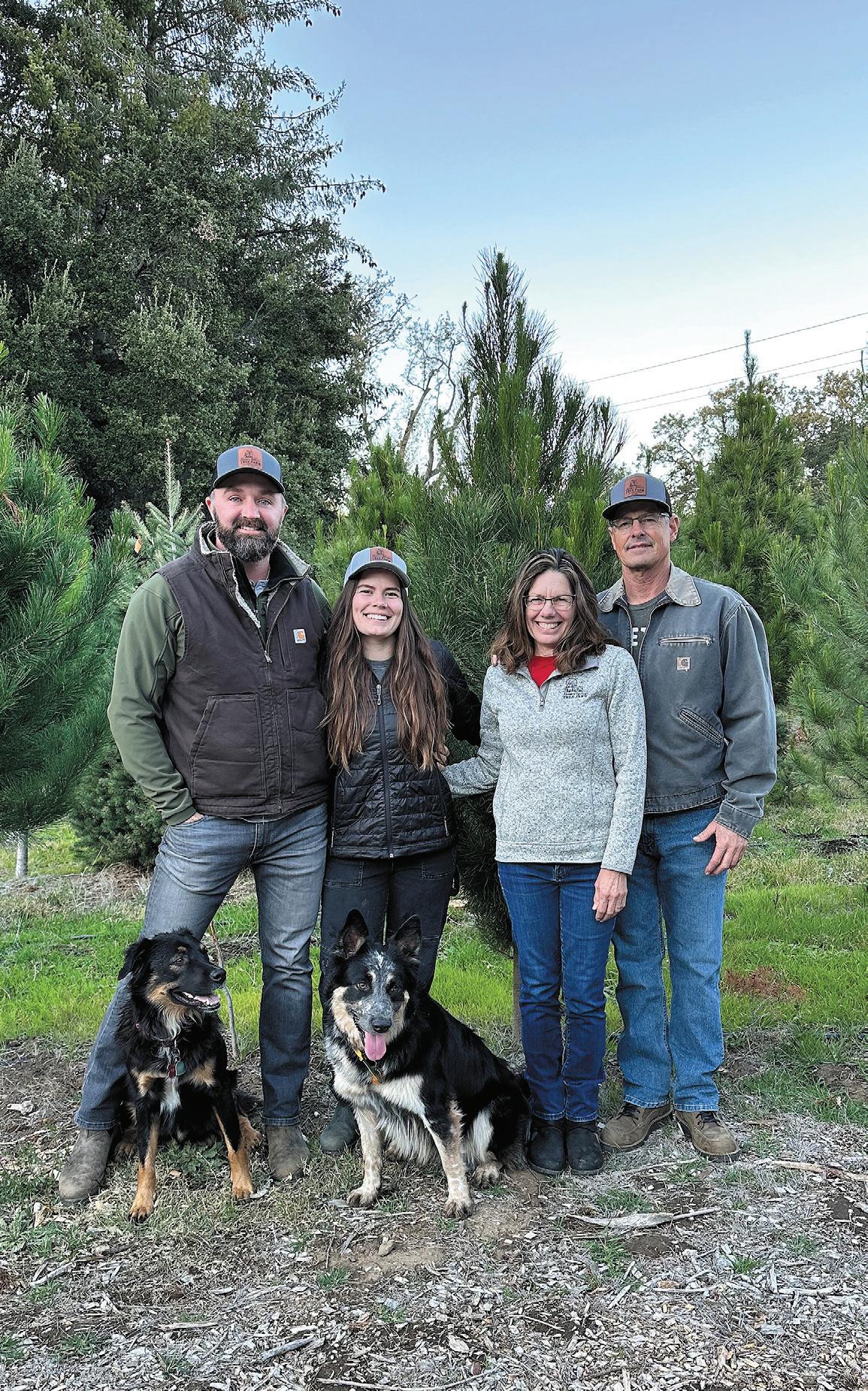
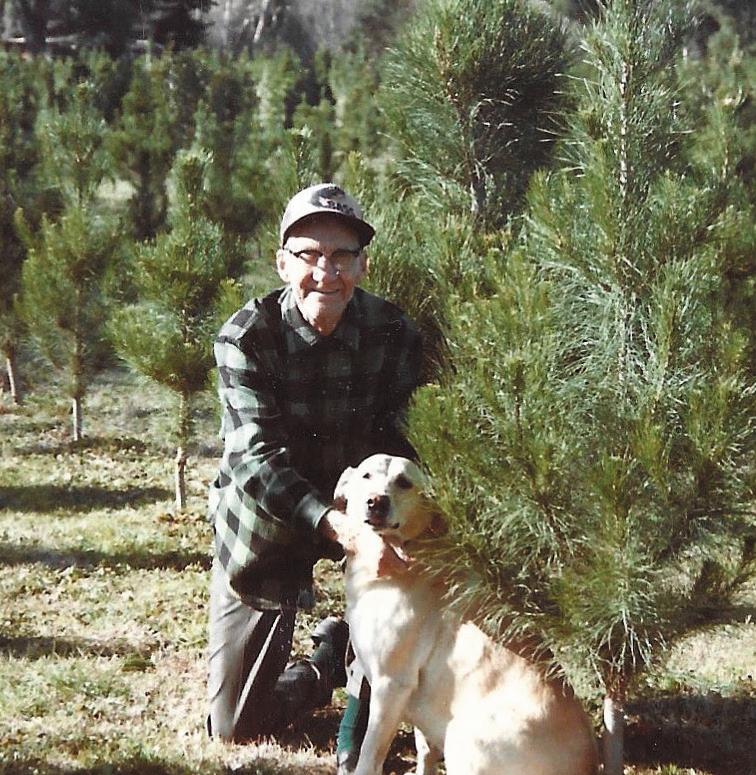
Hidden Springs Tree Farm is located at 3202 Monterey Road, Atascadero or go to hiddenspringschristmastreefarm.com.
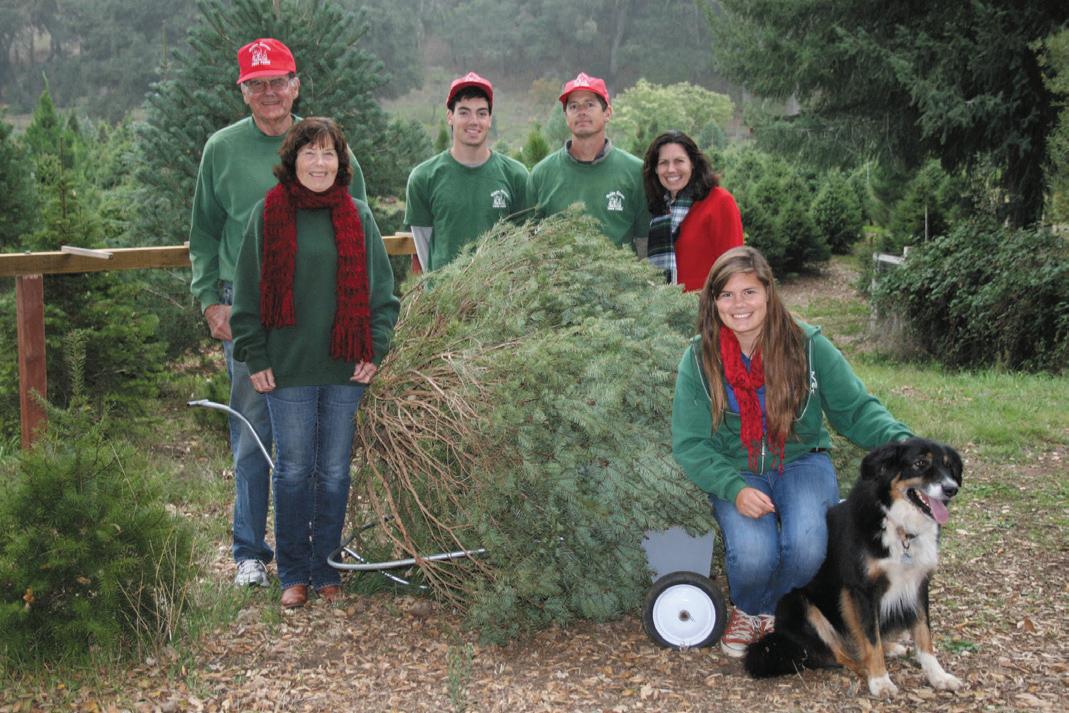
 STORY BY CHRISTIANNA MARKS PHOTOS BY NORTH COUNTY DANCE & PERFORMING ARTS
STORY BY CHRISTIANNA MARKS PHOTOS BY NORTH COUNTY DANCE & PERFORMING ARTS
Every year when the holidays start rolling in, lights start going up, and the stores start playing holiday tunes, there’s one more thing that makes it feel like Christmas on the Central Coast, the North County Dance & Performing Arts Foundation’s (NCD PAF) traditional version of The Nutcracker Ballet.
Though Pyotr Ilyich Tchaikovsky’s ever-famous Nutcracker Ballet originated in 1892 in Russia, the NCDPAF, Class Act Dance, and guest dancers have been pirouetting into audience’s lives in the North County’s esteemed version for 26 years. Bringing the joy, magic, and beauty of Christmas to the area in dance form.
Tchaikovsky’s Nutcracker ballet is a holiday classic based on the 1816 short story The Nutcracker and the Mouse King by E.T.A. Hoffmann. Oddly enough, the original ballet was not the massive success it has turned out to be, and it wasn’t until the 1960s that the ballet started picking up steam. Now, the story of Clara, her Nutcracker Prince, the evil Rat Queen, and the magical toymaker Drosselmeyer is a favorite part of many family holiday traditions.
The NCDPAF’s majestic yearly production boasts primarily lo cal choreographers and dancers, out of Class Act Dance in Paso Robles. This year, The Nutcracker features over 55 dancers, ages six and up, who have been strapping on their ballet slippers and rehearsing for their three performances since September. They will be joined on stage by a handful of guest dancers, coming in to perform a few of the principal roles.

“This year, our cast is comprised of mostly all Class Act Dance dancers. The last few years, we’ve had some other studios participat ing, but this year it’s just us. So that’s pretty exciting,” NCDPAF’s President of the Board Suzi Cusimano explained.
The NCDPAF is a nonprofit production management group in the North County and managing volunteer organization for Class Act Dance. In early November, the NCDPAF hosted a Nutcrack er Gala themed “Be Part of the Magic,” which is also this year’s production’s theme.
“It’s really our only fundraiser that we do for the Nutcracker, so it’s really important that we have community members come in and support that. I call this whole project the best-kept secret in the North County,” added Artistic Director Cheryle Armstrong. “People just don’t know how hard the dancers and the parents work for this production.”
The fun evening was held at the Atascadero Lake Pavilion and featured decadent, themed tables to do with The Nutcracker’s storyline. Dancers from 10 different scenes performed vignettes, giving attendees a taste of what’s to come in the full-blown pro duction. The evening also featured a live and silent auction, along with a production drive to help raise money for new costumes and updates to sets and props to give the county the highest caliber of ballet that the North County has to offer.
During its long-standing run in the North County, the ballet has featured beloved costumes, hand-painted sets, and backdrops that the company has come to cherish, and audiences have come to expect each year they return to the world of The Nutcracker.




The Grandmother of the Nutcracker on the Central Coast, as well as the production’s Artistic Director, Cheryle Armstrong, stated that the ballet, though traditional, does have small changes yearly to highlight that partic ular year’s dancers.
“Every year we try to morph [the choreography] so that it is customized to the actual dancers that are in the cast, but you want to keep a lot of the things the same as well because it is a traditional storyline,” Cheryle shared.
Audience members will fall in love with the storyline as Clara’s magical Nutcracker turns into an actual prince, and she journeys from her family’s Christmas Eve party into the Land of Sweets filled with a dancing Sugar Plum Fairy, evil rats and their Queen, and ballet sequences that take her all over the world to explore tasty treats that play roles in Christmas traditions, in addition to many other fun visuals in the North County’s version of this world-wide-holiday-classic.
For its 26th production, the Nutcracker will feature an entirely new battle scene. Directors Cheryle Armstrong and Kristen McLaughlin (from Bakers field) brought in Mauro Villanueva of Joffery Ballet to choreograph a brand new battle sequence as well as a scene called “The Magic Spell.” Mauro came to the Central Coast from Texas in September to choreograph the dances.
“The new sequence—that was an exciting thing that happened this year,” Cheryle shared of Mauro’s new and exciting choreography.
The other choreographers featured in this year’s ballet are Doriana Sanchez, Theresa Comstock, and Molly McKiernan, who join Mauro.
“A notable thing about our Nutcracker is the standards of practice,” stated Suzi. “Our ballet dance standards are pretty strict. They’re pretty traditional. Our caliber of dance is held to a high standard. You get a very good, very professional experience at our Nutcracker.”

Another thing that makes the NCDPAF’s version of the magical world of The Nutcracker different is that since its start 26 years ago, they have always included narration in their productions. Currently, you can hear the story unfold through the eyes of Clara as she gets pulled into the story that includes her Nutcracker Prince and the evil Rat Queen duking it out in a battle. The narration is there to accompany the storytelling through dance and help audience members understand the magical Christmas Eve story unfolding in front of them.
Local dancers Jordyn Monteath as Clara and Justin Grapetine as the Nut cracker Prince lead the well-known ballet. With guest performances by Sam Fulk as the magical toymaker Drosselmeyer, Janai Wilcox as the Sugar Plum Fairy, and Alyssa Jenkins as the Snow Queen.


For its 26th year, The North County’s favorite Nutcracker will be performed at the Spanos Theatre on the Cal Poly, San Luis Obispo campus. Performanc es will take place Thursday, December 1, at 6 p.m. with discounted prices for student night, Friday, December 2, at 7 p.m., and Sunday, December 4, at 2 p.m. Tickets can be purchased at nutcrackertickets.org.
“The NCDPAF, it’s our mission to bring the performing arts to the general public and to the community, and we’re so proud to have this production to put out there for the community to come and be a part of and add to the magic of the holiday season. All ages are enchanted by this production, and it has such a big following, and we’re so happy to be able to continue putting that on for the public. We appreciate all the support that we get and everyone who comes to see the show,” concluded Suzi.
• 3 cups white or wheat sandwich bread (3 to 5 slices)
• 4 cups 1/2-inch-cubed peeled butternut squash
• 1 large leek (white and light green parts only), sliced into 1/2-inch-thick half-moons, washed well, and dried
• 2 medium-size Yukon gold potatoes, cut into 1/2-inch cubes
• About 1/2 cup extra-virgin olive oil
• Kosher salt and freshly ground black pepper
• 4 scallions (whites and light green parts only), finely chopped
• 1/2 cup dried cranberries
• 1 cup diced unpeeled green apple (about 1/2 apple)
• 1 teaspoon chopped fresh sage leaves
• 1 teaspoon chopped fresh thyme leaves
• 1 cup chicken broth
• 1/4 cup milk
• 1 large egg yolk
• 1 teaspoon garlic powder
• 1 boneless, skin-on turkey breast (about 5 pounds)

It seems that once we turn our calendars to November, we be gin to think differently about the food we prepare. Instead of the big barbecues of summer, we begin to think more about a roast in the oven, a pot of soup on the stove, or chili in the crock pot. Then we’re hit with Thanksgiving and we really go into “food prep-action!”
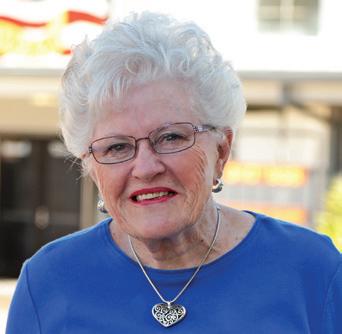
When December arrives and it’s time for another big meal, I try to plan something simple for our Christmas menu that does not require so much preparation. I found this month’s recipe in one of my latest cookbook finds. It’s compiled by Molly Gilbert,
titled “Sheet Pan Suppers,” published in 2014, and is full of great ideas for sheet pan meals, including snacks.
In the title of this recipe is the term “roulade,” and for those of you not fa miliar with it, let me explain. Simply put, it is a French term for a thin slice of meat rolled around a filling and se cured with string or a wooden pick.
I chose this recipe since it will limit the work and time required for prepar ing a whole turkey, with stuffing and side dishes. Serve it with your choice of wine and a serving of your favorite Christmastime dessert and you can sit back and enjoy visiting with your guests. The recipe will serve 6 to 8.
Preheat oven to 400 degrees with a rack in center position. Line a sheet pan with aluminum foil. Arrange cubed bread in an even layer on the pan, and toast in the oven until very brown and dry, about 8 minutes. Remove bread on the foil and set aside to cool. Leave oven on. Toss together squash, leek, potatoes, 1⁄4 cup olive oil, 1⁄2 teaspoon salt, and 1⁄2 teaspoon pepper in large bowl. Arrange hash in a single layer on sheet pan and set aside. Transfer bread cubes to the large bowl used for tossing the hash and add scallions, cranberries, apple, sage, thyme, broth, milk, egg yolk, garlic powder, 2 tablespoons olive oil, 1⁄2 teaspoon salt, and 1⁄2 teaspoon pepper, and stir to combine. Set stuffing aside.
Set boneless turkey breast skin side down on a cutting board and lay a big piece of plastic wrap on top of the meat. Use a heavy pan or flat-sided meat tenderizer to pound the turkey breast to an even thickness, about 1-inch. Remove plastic wrap and spread stuffing evenly over the meat, leaving a 1/2-inch border on all sides. Starting with one of the long sides, roll up the turkey breast, fairly tightly, like a jelly roll. Use butcher’s twine to tie up the roulade at 1-inch intervals. Place the roulade, seam side down, on top of the hash on the sheet pan. Sprinkle the roulade with 1⁄4 teaspoon salt and 1⁄4 teaspoon pepper, and rub a bit of extra olive oil over the skin. Roast until and instant-read thermometer inserted into the thickest part of the meat registers 165 degrees, about 11⁄2 hours. Allow the roulade to rest for 15 minutes before cutting into 1-inch-thick slices. Serve with the autumn hash.
I have, what is called Food Lover’s Companion, a Barron’s Cooking Guide. It is a handy book that gives “comprehensive definitions of nearly 6,000 food, drink and culinary terms.” I’m sure the libraries have copies, but if you are interested in learn ing more about culinary terms, etc., you might like to have a copy of your own.
Asparkling wine can only be called champagne when it’s exclusively produced from grapes grown, har vested, and made into wine within the delimited region of Champagne in France’s northern region. All other bubbly is simply sparkling wine.
Covering some 84,000 acres, the Champagne region, the birthplace of the iconic sparkling wine, is recognized as UNESCO’s World Her itage Sites.
Champagne is made primarily from three wine grape varieties — pinot noir, chardonnay, and pinot meunier. Other varieties, such as pinot blanc and pinot gris, can also be included in the blend.
Both Champagne and sparkling wines can be labeled NV (non-vin tage), in which the base wine is a blend of multiple vintages. The vintage bottle will be marked with the year the grapes were harvested during that season. In champagne, the majority of its production is non-vintage.
Nearly all sparkling wines are made by using one of two methods: bottle fermentation, known as the traditional method, or tank fermentation. In both cases, the dissolved carbon dioxide that makes the wine fizzy is a by-product of second alcoholic fermentation.
Champagne is produced strictly by bottle fermentation or méthod champenoise, a term that can only be used on Champagne bottle labels. In champagne, the base wine which has gone through primary fermentation can be a blend of any of the grape varieties grown in that region from different vintages and vineyards. To start the second fermentation, a mixture of sugar and yeast is added before the wine is bottled and stored.
While in the bottle, the yeast feeds on the sugar and produces carbon dioxide bubbles which, without an outlet, get absorbed into the wine. After two months, sugar is absorbed, the yeast dies and begins to add the “toasty,” yeasty bread-like flavors that méthode champenosie is known for.
The bottles are laid down for about two years, after which time they are hand-riddled, a time-honored tradition of moving the dead yeast cells down to the crown cap. The sediment is then “disgorged” by freezing the bottle neck and popping the cap off. Dosage is added at this stage, a mixture of sugar and wine that determines whether the wine will be extra dry, brut (driest), or demi-sec (sweetest). The bottle is then corked with a wire hood, covered with foil, and allowed to rest for another two months before release. Aging prac tice requires two to three years for non-vintage and four to 10 years for vintage champagne.
In the tank method, the base wine is transferred to a pressurized tank instead of a bottle. Sugar and yeast are added, and the tank sealed. Once the second fermentation is complete, the wine is filtered and bottled under pressure, which keeps the carbon dioxide to be retained within the wine.
The tank method is popular with the fresh fruity style of wine, such as the Italian Prosecco and the German Sekt. The Spanish Cava, Italian Franciacorta, and Crémant made in France’s Borgogne, and Loire regions are produced in the traditional method.
In California, winemakers have been making sparkling wine since 1860, using both traditional and tank methods. Along the Central Coast, winemakers are getting creative with various red and white wine grape varieties. Among them is Rava Wines using the traditional Burgundian varieties as well Spanish and Austrian varieties.

Co-founder Lauren Rava recently gave me a tour of the state-of-theart 17,000 square-foot winery set amid the scenic 500-acre estate in the El Pomar District.
Paso’s leading sparkling wine facility produces some 6,500 cases an nually under their Rava label as well as for other local producers. The impressive lineup of French and Italian equipment, installed in 2017, is designed for the traditional method of production. “We are getting ready to do tirage,” Rava said, explaining the process when the base wine will be transferred into bottles for the second fermentation.
The yeast culture mixed with sugar and nutrients will be added for the second fermentation, bottles topped with a “bidule,” a polyethylene casing, and a crown cap. The wine will age in the bottles for 18 months lying in tirage bins.
While a handful of California sparkling wine producers practice the hand riddling tradition, Rava has installed the gyropallette riddling machine, which gives 72 jiggling movements per bottle for seven days. The bottles then go through a cold glycol bath which freezes the bottle’s neck before it’s disgorged. After the final touch of dosage, the bottles are corked and wire-hooded.
Back at the tasting room, I encounter an extensive selection of Rava bubbly: the traditional Blanc de Blancs (chardonnay) and Blanc de Noirs (pinot noir) plus sparkling albariño and Lunare, a deli cious blend of riesling, chardonnay, and grüner veltliner.
or sparkling
Try both and ring in the New Year with your favorite flute of bubbly. Drink responsibly


For every channel crossing, I’ve made paddling from the mainland to the Channel Islands National Park, it’s always a relief leaving the shipping lanes in my wake and entering the Channel Islands Marine Sanctuary (NMS).
Once the southbound lane is in my rearview mirror, the Channel Islands NMS offers sanctuary surrounding the Northern Chain. It’s not only a haven for this weary kayaker, but for hundreds of species of fish, invertebrates, seabirds, and marine mammals, the pelagic food web in all its glory.
The NMS has been protecting the ocean and Great Lake re sources for 50 years; an anniversary reached in October 2022. It’s a celebration of aquatic life and cultural resources as it coincides with outdoor recreators and increasing tourism while maintaining that crucial balance of sustainability.
“Fifty years ago, the U.S. ushered in a new era of ocean conserva tion by creating the National Marine Sanctuary System,” said Claire Fackler, National Education Liaison and Volunteer Coordinator for
the National Oceanic Atmospheric Administration. “Since then, we’ve grown into a nationwide network of 15 National Marine Sanctuaries and two marine national monuments that conserve more than 620,000 square miles of spectacular ocean and Great Lakes waters, an area nearly the size of Alaska.”
Of those 15 National Marine Sanctuaries (and four others that are up for designation), five of those NMS are on the West Coast, one of those being the Olympic Coast in Washington State. The rest fall in line along the California Coast from the Greater Far allones, Cordell Bank, Monterey Bay, Chumash Heritage (up for designation), down to the waters surrounding the Channel Islands.
“The National Marine Sanctuary System will continue to im prove protection(s) of existing sanctuaries and will also expand the sanctuary system,” said Chris Mobley, Superintendent of NOAA’s Channel Islands National Marine Sanctuary. “We will strive for more diversity, equity, and inclusion as we work with communities, stakeholders, and partners, and we will increase our engagement with tribes.”
Over the past 50 years, some of those protections have seen a dra matic increase in species returning to the Santa Barbara Channel. In the 1990s, there were virtually no humpbacks in the channel, and now they are here year-round. Tony Orr, a wildlife biologist for NOAA, says overall, pinniped numbers are up at the islands and the surrounding waters, specifically at Pt. Bennett on San Miguel Island. Common murres have returned to breed and nest at Prince Island, located northeast of San Miguel Island, following a 100-year absence due to egg collecting and other disturbances.

“Numerous species have shown significant recovery around the islands, including many seabirds, pinnipeds, fish, and baleen whales,” continued Mobley. “In addition, working with the State of California and NOAA Fisheries, we successfully established a network of marine reserves and marine conservation areas encom passing about 20 percent of sanctuary waters in 2007. Diversity, abundance, and size of many species have increased within this network, increasing overall system resiliency and health. Finally, as shown in our latest sanctuary condition report, the sanctuary continues to sustainably support many uses, including commercial and recreational fishing, as well as diving, surfing, birdwatching, boating, and other recreational activities.”
However, challenges loom on the horizon. Climate change is one of those and arguably the largest, most significant threats to marine ecosystems, including sanctuaries. The NOAA Office of National Marine Sanctuaries says its workforce is equipped and ready to predict and respond to climate and environmental changes.


“We will work with NOAA, other agencies, partners, and com munities to implement effective restoration, climate adaptation, and climate resilience strategies for marine ecosystems and coastal communities,” added Mobley.
While recently leading a kayak trip back from Potato Harbor to Scorpion Anchorage on Santa Cruz Island, my attention was suddenly diverted by thunderous claps way out on sanctuary waters. In the distance, it sounded like canon fire. However, over my left shoulder, I caught sight of a massive tail fluke rising out of the uneven sea conditions. A slap-happy humpback whale was reveling in the northwest winds. It was repeatedly smacking its massive tail on the surface of the water, a fitting example of the Channel Islands National Marine Sanctuary providing sustainable habitat 50 years in the making and still counting.

Across
of player
off
Ladies" country
excited cry?
recipient,
out!"
feature
touched
plant
N.L.
in
Down
.Some holiday help
.__ room
.Let up
.Really learn

.Hailing successes
.Came up
.Alley cry
.Way
.Skier's fabric
.That, in Toledo
.Elton's broken john?
.High fliers
.Commencement
.Somme state
.Attention
.They're caught at the beach
.Company
.Song of praise
.Sailor's direction
.Forging device
.Ex's restraining order?
.Largest of the Near Islands
.Remarkable sight
.Pad
.It may have a bullet next to it
.Diversions
.Jazz fans
.Look that makes one look away
.Sea dog
.Disco outgrowth
.Beetle larvae
.The "love" in "My only love sprung from my only hate!"
.Meager 55.Without toppings
.NFL Hall of Famer Moore
pasta
with
e.g.




*Event dates and times are subject to change. Please call ahead or check online to confirm details.
thu dec
The Ugly Sweater Wine Walk is part of a month-long California Christmas brought to you by the Pismo Beach Chamber of Commerce. In combination with the wine walk from 3-6:30pm, local businesses will be staying open to allow guests to do their shopping
FRI dec 2
SUNKEN GARDENS, DOWNTOWN ATASCADERO
5:30 - 8pm
Soon after the lights come on, Santa and Mrs. Claus will be arriving via an antique Model-A fire truck to the tune of “Here Comes Santa Claus” performed by the Atascadero Fine Arts Academy. You will then be invited to visit Santa and Mrs. Claus at the North Pole entrance located at the back of City Hall that faces Atascadero Middle School
PISMO BEACH
Throughout the day Hosted by AmpSurf, there will be a learnto-surf clinic and opening ceremonies on Dec. 3, contest heats will run Dec. 4th-11th, and the closing will happen right after the last heats finish on Dec. 11
SAT dec 3
EMBARCADERO, IN MORRO BAY
6:30 - 8pm
Presented by the Rotary Club, the fishing, leisure and yachting community take to the water with decorated boats with dazzling lights and holiday cheer. Participating boats compete for prizes and celebrate the holiday wonder along the Embarcadero. Parade will go on rain or shine.
CAR CORRAL ON E. BRANCH STREET, IN ARROYO GRANDE VILLAGE
10am - 4pm
The Big Ditch Holiday Market is ready for all of your gift needs with 50+ makers & artists, three food trucks and sweet treats
DINOSAUR CAVES IN SHELL BEACH
10am - 4pm
Recurring on the 1st Sunday of the month, over 100 local artists and craftsmen sell and display their work, including paintings, sculpture, pottery, glass, textiles, jewelry, wood and metal furniture, and more. The event also features live music, hands-on children’s activities


PISMO BEACH PIER PLAZA
5:30 - 7:30pm
Annual Holiday Harmony event will include tree lighting ceremony, Santa Claus, 2 snow zones, and activities for kids. The first 250 children in the Santa Line will receive goody bags compliments of Pismo Beach Recreation. This event is free to all and food and beverages will be available for purchase
Santa House at the Embarcadero
SANTA’S HOUSE, CORNER OF EMBARCADERO AND FRONT ST.
5 - 8pm
Santa will be welcoming families on Fridays and Saturdays from 4-8pm and Sundays from 12-4pm the first three weekends of December. Friday, Dec. 3., Santa will be at the Tree Lighting at City Park and will come to his house at 6pm.
720 AEROVISTA PARK, SUITE C
11am - 2pm
While shopping, enjoy holiday food, drinks and music. The market will feature home decor, baked goods, jewelry, luxury clothing, and more from local vendors. Kid-friendly activities will also be available
TRAFFIC WAY AND BRANCH STREET IN ARROYO GRANDE VILLAGE
5pm
Christmas and holiday concert and parade
61st
DOWNTOWN PASO ROBLES
7 - 9pm
Join Santa and Mrs. Claus while enjoying a parade featuring an array of light spectacles from local businesses. A variety of awards will be also be given for best in show. This year's theme is Deck the Halls
mon dec 5 -
ATASCADERO
5 - 8pm
See decorated local homes, guaranteed to get everyone in the holiday spirit. The map provides an opportunity for residents and businesses to show off their homes and storefronts, and for families to enjoy a safe and fun activity driving through town to check out all the wonderful outdoor lights this season
SLO BOTANICAL GARDEN, 3450 DAIRY CREEK ROAD IN SAN LUIS OBISPO
10 - 11am
All ages are welcome for story time in the garden. For more information, contact Millie at (805) 541-1400 x 302 or millie@slobg.org
AVILA BEACH PROMENADE
11am - 12pm
Participants must register and be checked in between 10:30-10:45am to receive a contest identification number for the costume contest. Check-in at the registration table in front of Custom House

SUNKEN GARDENS, ATASCADERO
5 - 9pm
With over 75 tons of snow, this year’s snow-themed event includes Joe’s Little Train, two Euro bungee jumps, an obstacle course, gladiator joust, bounce houses, face painting, caricature artist, and of course, Santa and Mrs. Claus
SLO BOTANICAL GARDEN, 3450 DAIRY CREEK ROAD IN SAN LUIS OBISPO
9am - 5pm
Free admission day full of activities for whole family to make a day of nature and exploration
Baywood / Los Osos
668 SANTA MARIA AVE, SAN LUIS OBISPO
2pm – 4:30pm
Morro Bay
2650 MAIN ST. SPENCER’S PARKING LOT 2pm – 4:30pm
Paso Robles
36th Annual
6 - 9pm
Street Victorian DOWNTOWN PASO ROBLES
Main Street and Historical Society invite you to bring your family to drive down Vine Street for this annual community Christmas party tradition. Ebenezer Scrooge, the Snow Queen, Mr. & Mrs. Claus and the whole crew will be on-hand, along with community caroling, illuminated floats, entertainers, live music
AVILA BEACH PIER
12pm
The 11th annual Avila Beach Polar Bear Plunge is a celebration of fitness, nature, a New Year, camaraderie, and still having dessert
CAYUCOS PIER
12pm
Take the plunge at their 43rd Annual Carlin Soule Memorial Polar Bear Dip. Join them late morning for festivities that include music, dancing, prizes, and participant certificates
Thursdays
9:30am – 12pm
Tuesdays Fridays
Atascadero
Arroyo Grande

11TH & SPRING, PASO ROBLES, CA 93446
6505 EL CAMINO REAL, ATASCADERO, CA 93422
3pm – 6pm
WEDNESDAYS: SMART & FINAL PARKING LOT AT 1464 EAST GRAND AVENUE
WED: 8:30am – 11am
SATURDAYS: OLOHAN ALLEY IN THE ARROYO GRANDE VILLAGE
Sat: 12pm – 2:30pm
Cambria
1000 MAIN ST, VETERANS HALL PARKING LOT 2:30 – 5pm
Avila Beach: Starting May 6 AVILA BEACH PROMENADE 4pm – 8pm
Templeton
CROCKER ST & 6TH ST, TEMPLETON, CA 93465
9am – 12:30pm
Morro Bay 2650 MAIN ST. SPENCER’S PARKING LOT 2pm – 4:30pm
FIVE BLOCKS OF HIGUERA STREET BETWEEN OSOS STREET AND NIPOMO STREET IN DOWNTOWN SAN LUIS OBISPO 6pm – 9pm

1st Sat of NoV
11TH & SPRING, PASO ROBLES 9am – 1pm
County of San Luis Obispo
All meetings below meet at the County Government Center, Board of Supervisors Chambers, 1055 Monterey St, Room D170, San Luis Obispo.
•Subdivision Review Board • first Monday, 9 a.m.
Board of Supervisors • first and third Tuesday, 9 a.m.
Parks & Recreation Commission • fourth Tuesday, 6 p.m. Airport Land Use Commission • third Wednesday, 1:30 p.m. Air Pollution and Control Board • fourth Wednesday of every odd numbered month, with some exceptions. 9 a.m.
Local Agency Formation Commission • third Thursday, 9 a.m.

Planning Commission • second and fourth Thursday, 9 a.m. County Phone Directory: 805781-5000
*Visit slocounty.ca.gov for virtual & up to date meeting info.
San Luis Obispo Regional Transit Authority Phone: 805-541-2228 253 Elks Lane San Luis Obispo, CA 93401 Visit: slorta.org
San Luis Obispo County Office of Education Phone: 805-543-7732 3350 Education Drive San Luis Obispo, CA 93405 Visit: slocoe.org
Clerk-Recorder
San Luis Obispo Office Phone: 805-781-5080 Monday-Friday, 8:00 AM - 5:00 PM, excluding holidays 1055 Monterey Street Suite D120 San Luis Obispo, CA 93408

San Luis Obispo
Chamber of Commerce Phone: 805-781-2670 895 Monterey St. San Luis Obispo, CA 93401 Visit: slochamber.org
Cambria Chamber of Commerce Phone 805-927-3624
Open Monday through Friday 9 to 5
Please call first on weekends. 767 Main Street Cambria, California 93428 Visit: info@cambriachamber.org
Cayucos
Chamber of Commerce Phone: 805-995-1200 Mailing Address: PO Box 106 Cayucos, CA 93430 Visit: cayucoschamber.com
Morro Bay
Chamber of Commerce 695 Harbor St Morro Bay, CA 93442 Phone: 805-772-4467 Visit: morrochamber.org
Avila Beach Community Services District Phone: 805-595-2664 100 San Luis Street Avila Beach, CA 93424
Mailing address is: PO Box 309, Avila Beach CA 93424 Visit: avilabeachcsd.org
Point San Luis Harbor District Phone: 805-595-5400
3950 Avila Beach Drive P.O. Box 249 Avila Beach, CA 93424
Los Osos / Baywood Park Chamber of Commerce Phone: 805- 528-4884
781 Los Osos Valley Road, Los Osos, CA 93402
Mailing: P.O. Box 6282, Los Osos, CA 93412 Visit: lobpchamber.org
Pismo Beach Chamber of Commerce Phone: 805-773-4382 Visit: pismochamber.com 649 Dolliver St Pismo Beach, CA 93449
SUBMIT UPCOMING EVENTS TO: office@13starsmedia.com
(805) 466-2585 • centralcoastjournal.com
Taken on a whale watching trip with SLO.Tours on July 6, 2022
 by Amy Joseph Pismo Beach
by Amy Joseph Pismo Beach
To submit your Photo of the Month, send a high resolution (300 dpi) jpeg photo by email to editor@centralcoastjournal.com, along with where in SLO County the photo was taken and the photographer’s name.
“May you find peace in the promise of the solstice night, that each day forward is blessed with more light. That the cycle of nature, unbroken, and true brings faith to your soul and well-being to you. Rejoice in the darkness, in the silence, find rest, and may the days that follow be abundantly blessed.”
-Native American Solstice Blessing
During this time of year, there are so many holiday traditions that bring family and friends together. Holiday shopping, festive events filled with snow, Santa Claus and reindeer, lights, candles, and cheer; however, one symbolic and richly traditional day will come and go, and most people will miss it.
Winter Solstice is the shortest day and lon gest night of the year. Cultures around the world have long held feasts and celebrated holidays around the winter solstice. Fire and light are traditional symbols of celebrations held on the darkest day of the year.
Since ancient times, people all over the world have recognized this important astro nomical occurrence and celebrated the sub sequent “return” of the sun in a variety of dif ferent ways. In addition, old solstice traditions have influenced holidays we celebrate now, such as Christmas and Hanukkah.
There is no better time of the year to feel and show your love than the holiday season. Though many people relate the month of De
cember with Christmas, there’s so much more to be said about the month. From Hanukkah and Kwanzaa to showing selfless acts of love, this season is all about spreading joy and cheer during the coldest time of the year.
This year, Winter Solstice falls on Wednes day, December 21, and in the northern hemi sphere, the date marks the 24 hours with the fewest daylight hours of the year.
Winter Solstice is considered a turning point in the year in many cultures. The day is held sacred and celebrates the new solar year’s birth, also known as Yuletide.

Yuletide refers to the time around the Christmas season, traditionally recognized from December 21 until January 1, and dates back centuries. Though Yuletide’s rituals have changed dramatically over the years, some Yuletide traditions remain and have contrib uted to modern-day celebrations of the festive season.
Decorating an evergreen tree was a common Yuletide custom in ancient times, as was giving
gifts to friends and loved ones. The Yule Log is another centuries-old tradition meant to symbolize the passing of an old year into a new one, with the promise of hope and happiness. The oak log is usually decorated with evergreen branches, sprigs of holly, bare birch branches, and trailing ivy vines. A more delicious alter native is the classic French Bûche de Noël, a decadent chocolate cake baked in the shape of a Yule Log and shared with family and friends at a Yuletide gathering.
Children and adults alike around the world find so much joy in the magic this season brings. No matter what you celebrate, may we find peace and love in celebrating together and showing kindness to one another.
May we remember that this season also brings with it the cold and isolation and prompt us to reach out and share our many blessings with others. It is important that we recognize that and know that the dark winter days bring the warmth of spring that heals and rejuvenates our souls and that the holiday season is so much more than gifts found under the tree.




